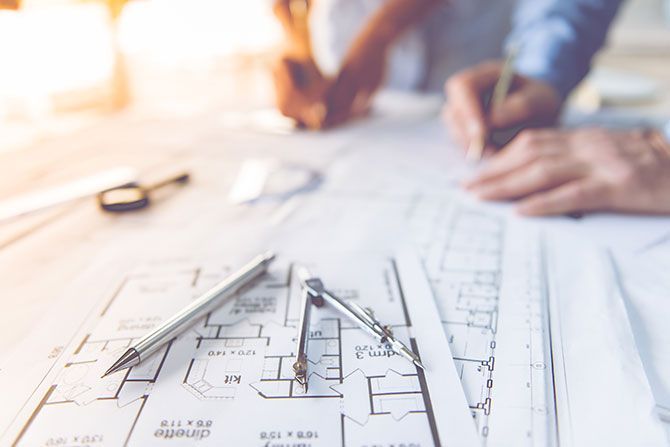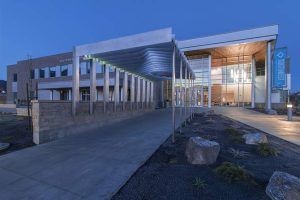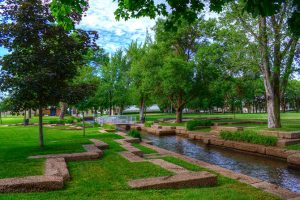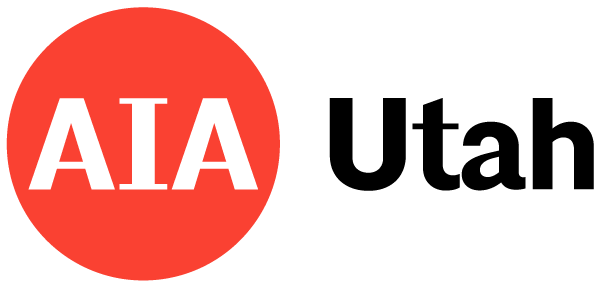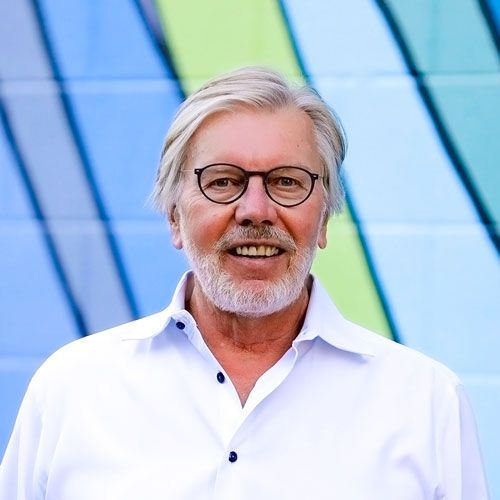
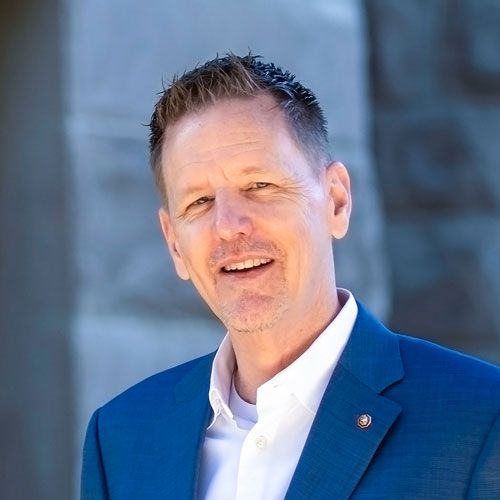
The AIA has always been valued in the GSBS culture. Mike Stransky and David Brems were both officers in the AIA Salt Lake Chapter in the 80s. GSBS Architecture started in 1985 with AIA, when Mike and David became acquainted and decided that they both had something that the other’s firm could use. They added Stephen Smith in 1986, who also had been an AIA officer, and Kevin Miller, who has since been a long-term member and Chair of the AIA National Documents Committee.
Then over time, Mike became a Regional Director, then sat on the national board. Stephen participated in R/UDATs. David became a member and then Chair of the National Committee on Design. All four of the founders of GSBS and Kevin are Fellows, evidence of their long-term support of and service to the profession.
Fran Pruyn and Robert Pinion of AIA Utah recently sat down with David and Kevin and discussed the lessons learned throughout their careers in the architectural business. The following are excerpts from the conversation.
What are some of the hardest things that you learned from years in the architectural business?
David: Do great design, get paid and work with quality clients. It is a business; if you do good work, you should be successful. Where we get into trouble is when the project is not well defined, or an area where we are not experts. When we work for people with high expectations who appreciate our talent, we are successful.
Kevin: Learning how to evaluate, understand, and speak to the value proposition. When you think of the three professions — Law, Medicine, and Architecture — architects are frequently given the highest ratings in terms of trustworthiness. Yet, getting a client to pay us on an hourly basis is almost out of the question. It’s counter-intuitive, but I believe it’s because clients don’t really know what we do. Good design is valuable, but it is hard for architects to articulate and substantiate it. There is the aesthetic value — our clients think of that first — but equally important is the functional resolution of the design problem, and the stewardship of the financial and environmental resources. As architects, we tend to focus on the beauty, sometimes because it is difficult to assess how other features contribute to the effectiveness of the facility’s users.
What we do has value to our clients, and it takes a while to begin seeing it in that light. It is important to understand your role in the value creation, not just to be happy to have a project.
GSBS Architecture was founded in 1978. How has the business model changed since then?
David: We are only 40 years old; it seems like we are a very young firm. There is still a lot of enthusiasm! When we first organized, our focus was to simply treat employees with respect and try to get a great product. We paid our bills, our employees, and sometimes that meant that the last people to get paid were the leadership. Our consultants were paid even when we didn’t get paid.
Kevin: If we think that what we are going to do tomorrow will be what we did yesterday, we would be out of business next week. The firm is a living, breathing and evolving organism unto itself. Our leadership has evolved, as has how and what we practice, sometimes strategically and sometimes in response to conditions that we cannot control. Even how we manage the firm’s finances has changed over the years. But underlying all of that is a keen adherence to our core values and culture: do great work, have great people to do it, do it in a way that sustains the firm and try to have a little fun along the way.
This firm was designed to exist after we are done here. As leaders, we must create an environment that ensures sustainability, creates long-term value, and has opportunities for the future. We have always believed that the collection of talent is our most important asset. Growing the staff is as important as the work.
Sustainability has always been part of your firm’s ethos. Where did that begin, and how did it develop?
David: I went to college in the late 60s and 70s, at a time of the emerging environmental movement. We have credibility (long-term investment in these beliefs) that I believe has helped move the industry. Now we have an invested staff that often knows more about sustainability than I do.
Kevin: There has always been clarity that we should act like we are stewards of our client’s resources. We know what we are about.
What courses should students take besides design classes?
David: Many different perspectives make firms stronger. I’m worried that students are spending time learning software that will become obsolete; time would be better spent on the design process. It’s important in our profession to consider many different points of view. The diversity of our staff, in addition to international employees and gender, also includes the diversity of backgrounds. Diversity has been a piece of our success.
Kevin: You have to understand what your accountant is telling you — an Intro to Accounting class is really helpful. Although it is not popular now, I have always been a huge advocate of liberal education — psychology, sociology, organizational behavior and communication. That all plays into what you are doing and fits into the larger practice.
How has participation in the AIA been valuable for your firms and your careers?
David: A project will come up, and I will think, “Who do I know that specializes in this sector?” The collegiality through AIA has been the best.
Kevin: My mentors taught me that we have a responsibility to make the profession better for the architects who will practice in the future. Too often, I hear the question, “What has the AIA done for me?” when I believe the real question is, “What have I done for the profession?” We have always believed that it is important for the entire profession to get behind our profession.
Maybe a half dozen of the members of the Documents Committee are sole practitioners, and some are in residential practice, despite the significant time commitment required of committee members. The committee involves a 10-year commitment to membership. There are four multi-day meetings a year and typically weekly task group conference calls where content is developed, drafted and revised for the program’s 200+ documents. The members are passionate practitioners who see the value in making the industry better through their involvement. They demonstrate that all of us, no matter our circumstances, can find a way to contribute. Of course, the knowledge gained, and the networking are invaluable. Fourteen years on, I can say without any doubt that the effort has more than paid off the time and money spent.
I have been at GSBS my entire career. You gotta show up and see where you fit into the industry as a whole instead of sitting in your cubicle and working day after day. It broadens your perspective. The Documents Committee has exposed me to a hundred or so practitioners, and that benefit is incalculable to providing a much broader perspective on practice.



